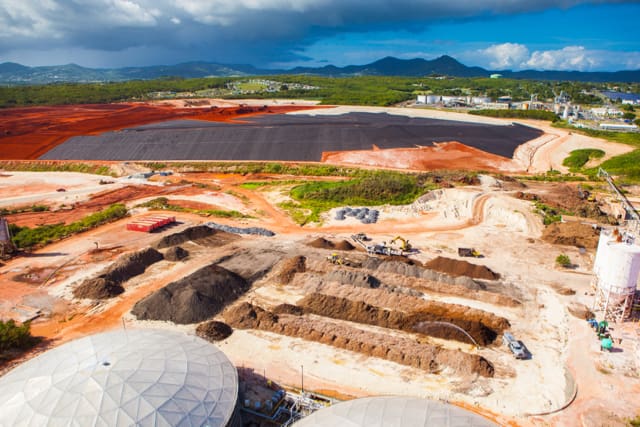
Author’s Note: St. Croix, once more, stands at a crossroads. The present situation appears unworkable, the path forward uncertain. It is not, however, the first time St. Croix has stood at such a precipice. This historical six-part series explores three moments in the past century – VI Corp, Harvey Aluminum, and Hess Oil – where frustration with the given situation boiled over into radical change. Breaking with the past, a better future for St. Croix was declared, a new foundation laid. These decreed Crucian futures sometimes aligned with the people and sometimes overrode the people. Today, Limetree comes into view at just such a crossroads, and once more the future of St. Croix is up for grabs.
Manufactured Progress: Harvey Aluminum in St. Croix (Part 3) (Part 4 – below)
Tipping the Scales
Although VI Corp recorded a record profit in 1963 with bonuses for local farmers and increased spending on public housing, between 1957 and 1962 it averaged an annual loss of $378,000. As its charter stipulated, VI Corp was required to pay local taxes, to make its equipment available for plowing and harvesting at hundreds of homesteads and to maintain agricultural infrastructure for all farmers on St. Croix. VI Corp also was required to invest its revenue in education, healthcare and housing programs in the Virgin Islands. Governed by public need more than private gain, these mandated costs led some to argue that fiscal deficits on the VI Corp balance sheet were often due to “a very unrealistic and largely misleading picture.” Yet such losses, Governor Paiewonsky insisted, made the continued public ownership of VI Corp both irresponsible and impossible. “The local Government cannot justify remaining in this industry,” he said.
Harvey Aluminum, critics on St. Croix quickly pointed out, was exempted from all local taxes and was subsidized handsomely from the Virgin Islands treasury to the tune of $500,000 a year. Beyond platitudes, Harvey had no fixed agreement to hire locally or to increase wages. While Harvey touted how the St. Croix plant would bolster the wealth of shareholders in NYC and LA, the company had no fixed plans to invest revenue in the welfare of St. Croix. In early 1964, Senators from St. Croix showed their counterparts in the Department of Interior how lucrative VI Corp’s budget would be if granted all the tax breaks and subsidies of the Harvey deal. Such an argument fell on deaf ears.
Was this socialism for wealthy corporations while the social welfare of small farmers was ruthlessly privatized? Senator Hodge refused the premise. “We are hearing cries of creeping socialism; what we want to get rid of is galloping feudalism.” Equating any defense of agriculture with approval of slavery, Governor Paeiwonsky proclaimed his intention to stomp out VI Corp as the last vestige of colonialism in the Virgin Islands. “Governor Pledges to Wipe Out St. Croix Feudal System,” ran one headline.
Postcolonial Prosperity?
Many Crucians were not convinced. “All over the world people are freeing themselves from colonial powers and corporations, and land reform is the basic ingredient of that freedom,” wrote Ralph Clifford in the St. Croix Avis in 1963. It was a point that resonated across the Caribbean. Land reform catapulted Castro’s revolution in Cuba in 1959, and Jamaica, Trinidad, and other Caribbean nations seized independence in the 1960s with promises of returning the land to local control. Charting a different course, Paiewonsky was trying to give away “the most fertile land in St. Croix” to distant corporations, Clifford argued, “The single most precious and scarcest resource – LAND – is being stolen from the people.”
As Crucians mobilized around the land as the basis of their freedom and dignity, many labor unions joined with the Government House in St. Thomas to insist only heavy industry could bring the Virgin Islands the economic clout it needed to assert its rightful place in the modern world. This debate between whether farms or factories offered a better metric of prosperity and progress resonated with decolonial struggles worldwide.
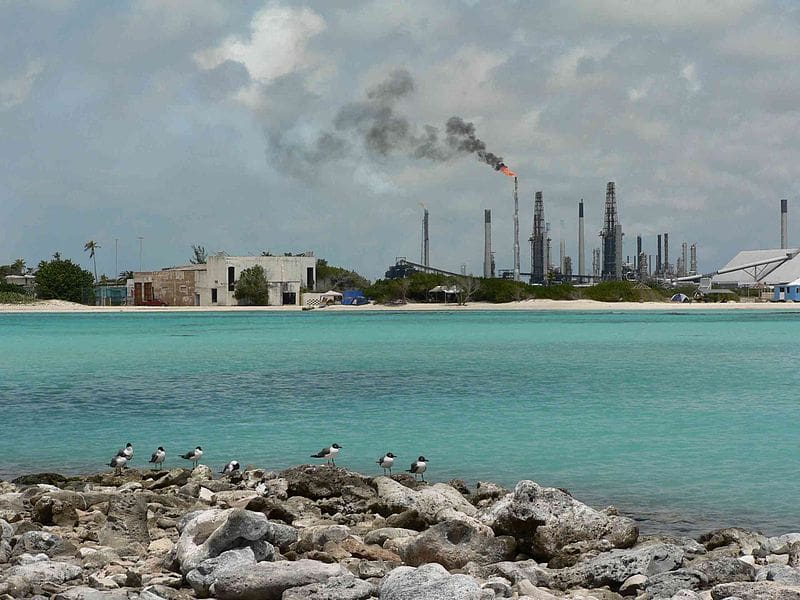
Paiewonsky’s commitment to aluminum plants and oil refineries was not distinctive to the Virgin Islands but followed in the footsteps of many Caribbean nations that saw export-oriented bauxite and petroleum processing as the economic foundation that could best match their growing political ambitions in the wake of WWII. But as places like Guyana, Jamaica, Trinidad, and Puerto Rico worked to add heavy industry without subtracting peasant agriculture, the Virgin Islands took a more either/or approach. And by 1963, the Governor made it clear that the promise of industrial enterprise exceeded any commitment to land as a public good. The agrarian jewel of St. Croix had to be dismantled, the choicest farmland sold.
The St. Croix Avis threw up its hands in an editorial. “There is simply no justification for it, for once the land is disposed of it will certainly never be regained.” But perhaps that was the point.
Agrarian Dissent, Paramilitary Measures
Crucians soon hatched a plan for the Legislature of the Virgin Islands to purchase all VI Corp land. Island farmers, backed by a growing coalition of hoteliers, environmentalists, retired expats, Puerto Rican farmhands, and Crucian senators, insisted VI Corp farmland remain a resource for St. Croix. Proponents of industry were having none of it. Adding paramilitary violence to draconian policy, a campaign of terror was launched against farmers and their defenders.
An arson spree torched farms and cane fields across St. Croix in 1963 as Crucian Senators supporting agriculture received death threats in their homes. In November, the sole office providing farmers with access to federal resources on St. Croix was abruptly closed, slamming the door on an annual flow of over $1 million in aid for agriculture on the island. “I doubt seriously whether any other branch of the Federal or local government has invested as much in ‘self-help’ for the people of St. Croix,” Arthur Golden complained to the St. Croix Avis.
As “one of the largest sugar crops in the history of the VI Corp” was recorded in May 1964, Governor Paiewonsky formally announced that all VI Corp assets along with 2,400 acres of farmland on St. Croix would be auctioned off to the highest bidder in a few days time. The rushed auction, the Governor explained, lumped all the farmland together to encourage bidding by highly capitalized industries. Individual farmers, by design, were priced out of the bidding. The auction also expressly prohibited the Legislature from bidding (or even matching the winning bid). Crucian Senators noted the announcement came days after the end of the legislative session, preventing any discussion or oversight of the sale. And ten days later, a subsidiary of Harvey Aluminum placed the winning bid on the still beating agricultural heart of St. Croix.
Thousands of Crucians flooded the streets of Frederiksted and Christiansted demanding justice for agriculture. “Why should a corporation like Harvey own half of St. Croix?” asked Senator Augustin Doward. Decrying the “20th century Judases” in St. Thomas who were allowing Crucian farmland to be sold to Harvey, Senator Randall James was resolute: “VI Corp land must be had for the people.” “Crucians” wrote the West End News, “cannot sit back idly and watch the spring of life being sapped. So fight we will!”
Any defense of public investments in agriculture was, Paiewonsky responded, “the rankest form of colonialism.” Describing VI Corp as a “feudal lord” intent on holding back progress, Paiewonsky was delighted to hand over VI Corp land to the engine of private business. Industry offered a proven route of modern development, and as Paiewonsky pointed out, proceeds from the sale helped establish and endow the University of the Virgin Islands.
It was an outlook soon broadcast across St. Croix as Harvey Aluminum commissioned its own newspaper and radio station on Recovery Hill. Disguising its corporate owners, this media conglomerate routinely celebrated the destruction of agriculture as evidence of progress in the Virgin Islands. “It is good that the VI Corp property has been put up for sale,” one story began, “St. Croix has had a sugar economy for long enough.” Reporting explained how Caribbean nations that encourage farming can remain stuck in feudalism. One story compared those rallying support for agriculture to Hitler and Stalin.
Although VI Senators were uniformly opposed to the land sale and unanimously petitioned the Department of Interior to block the sale, a month later Senators from St. Thomas and St. John were coming around to the sale. Brushing aside accusations of kickbacks and ongoing protests in St. Croix, in June 1964 the Legislature endorsed the sale of VI Corp assets and land to Harvey Aluminum. Support came almost entirely from St. Thomas and St. John.
A year later and in the midst of another record-breaking sugar harvest, Harvey announced plans to phase out agriculture on St. Croix. The modern sugar factory was dismantled and shipped to Venezuela (where it is said to still operate). Purchased by Harvey for exactly ten dollars, the collectively owned farming equipment that helped homestead farmers plow their fields and harvest crops each season, was driven into the sea. Today their rusted-out remains are a marginal diving attraction on St. Croix.
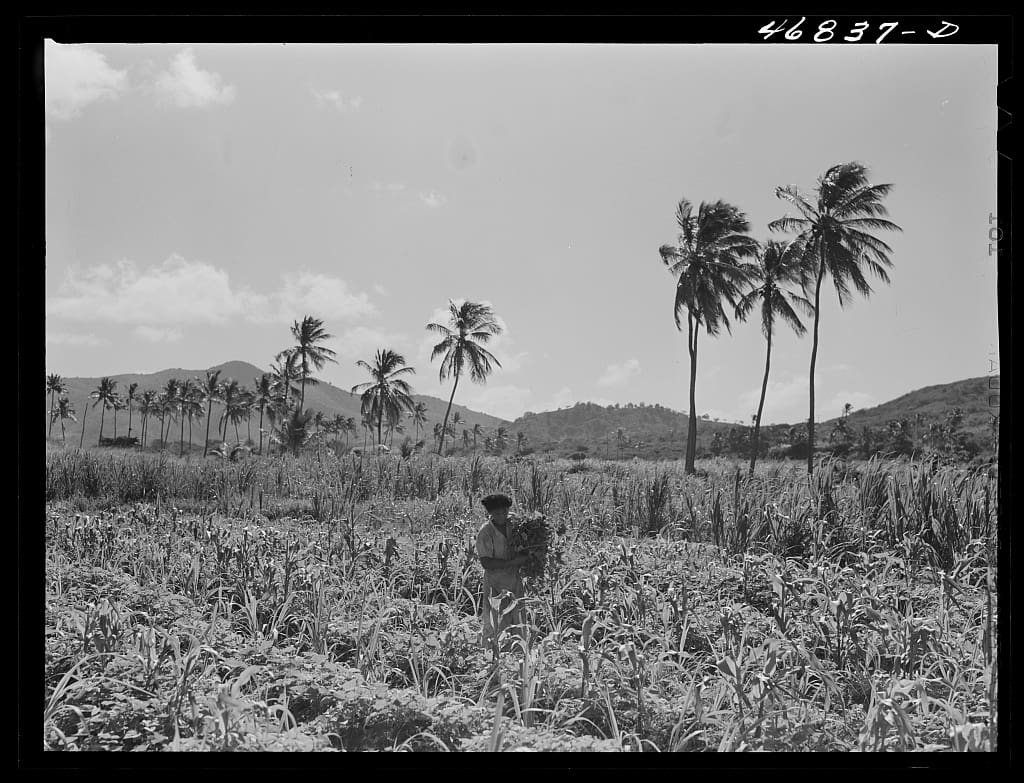
Before the sale, several villages of cane-cutters and farmhands from Vieques were promised that they could remain in their homes and retain access to the gardens they farmed (many were in the process of becoming homestead farmers). After the sale, they were told to leave. Some chose to stay. “They ripped the roofs off the houses and left everything to rot,” one farmer recalled to me in an interview.
Want amidst Wealth
The revolution from agriculture to industry on St. Croix was far from a natural transition. Decreed rather than democratically decided, the eradication of small farms and enticement of big factories to St. Croix unfolded over the protests of residents. And even as Harvey and Hess transformed the Virgin Islands into one of the wealthiest Caribbean economies on paper, many Virgin Islanders felt newly alienated from the manufactured might of export-oriented chemical processing.
You cannot cook a meal of nor build a home from bauxite or petroleum products alone. Yet the refinement of these commodities on St. Croix proved immensely lucrative for Harvey and Hess, and generous wages soon lifted a class of workers into the comforts of the middle class. Salaries at the factories were double the going rate for labor in agriculture or hospitality. For many, jobs at the plant became an accessible ladder into modest affluence.
Yet these factory jobs were never plentiful enough to employ everyone displaced by the managed decline of agriculture. Many working-class Black and Puerto Rican farmers found themselves stranded between a collapsing public food system and the rising cost of everything they now needed to buy. Even as the territory achieved the highest per capita GDP in the Eastern Caribbean in the 1970s, this industrial boom did not exactly free the Virgin Islands from dependency so much as deepen the islands reliance on costly imports and external assistance. Federal aid to the VI actually tripled in the decade after industry set up shop in St. Croix.
This paradox of want among wealth proliferated as industry monopolized the economy of St. Croix. GDP of the Virgin Islands skyrocketed from $25 million in 1960 to $500 million in 1975, driven almost entirely by the output of Harvey Aluminum and Hess Oil. That same period witnessed unemployment among Crucians shift from almost non-existent into “a serious problem” that crested 10% of the working population. Nor was employment at the factories without strife. After the first batch of Crucians went on strike at Harvey and Hess for the wages promised, both firms came to rely on workers imported from elsewhere.
It cannot be denied: industry brought profound wealth to the Virgin Islands. But it was a wealth that often came to feel just out of reach for most Crucians. It also came at a tremendous ecological cost.
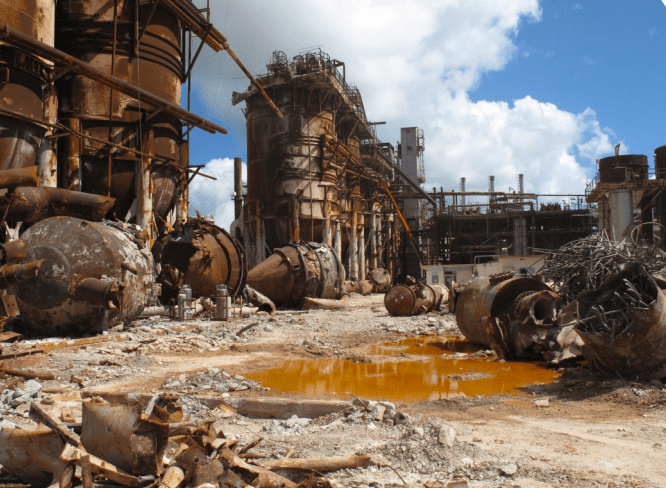
An Aluminum Nail in the Coffin of Agriculture
After Harvey took control of VI Corp, much of the usurped farmland was simply fenced off. Occasionally Hess Oil, which purchased the land from Harvey, would sell a section back to the local government or to private developers. A government report in 1965 warned that the “indiscriminate urbanization” of former VI Corp farmland would soon render agriculture on St. Croix impossible to reboot. “This land should be able to provide for most of the food needs of the islands,” the report concluded, but urgent action was required to zone fertile fields as exclusively agricultural.
Instead, much of the prized farmland of St. Croix became real estate. As food prices predictably soared, one large section of farmland was paved over to welcome the island’s first big box grocery store and shopping mall. The residential developments and commercial strips that now crowd Centerline Road distract the imagination from the prolific fields and proud farmers that claimed this ground just 50 years ago.
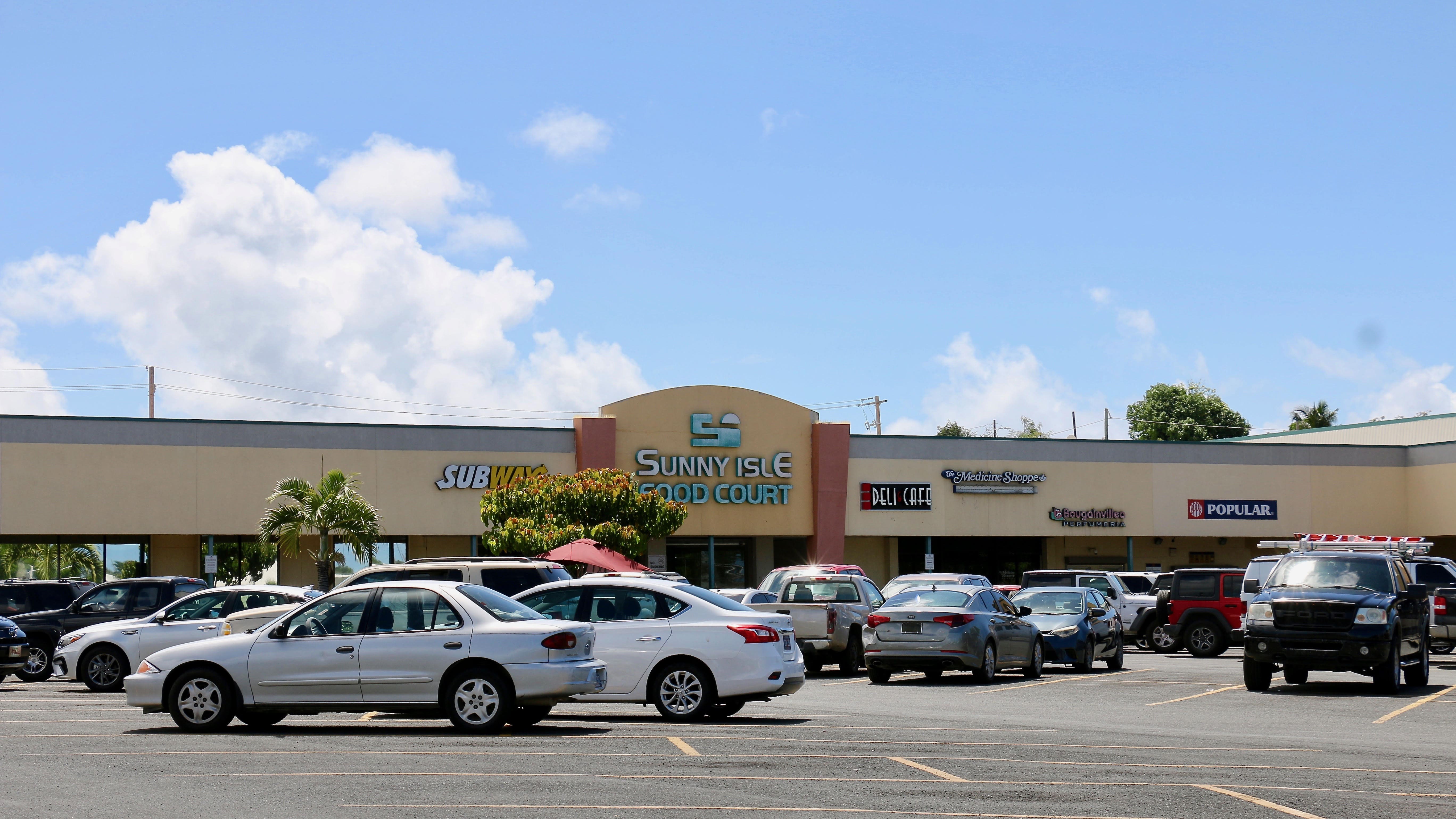
Along the gentle slopes of St. Croix, the architectural record seems to jump directly from plantation ruins to suburban clutter, a leap that quietly extinguishes the monumental accomplishments of VI Corp and homesteader farmers. And today on St. Croix it is hard to find any celebration of the homesteads that rescued the island from the Great Depression, rebuilt the Virgin Islands on a more equitable foundation, and resisted the imposition of industry. So much has already been forgotten.
Industrial pollution has only added environmental injury to this historical insult. Absent effective oversight, Harvey Aluminum and Hess Oil both salted the landscape of St. Croix with toxic waste, an environmental fact that further removes cultivation from the possibilities of the present. Today, a mindboggling array of petrochemicals have saturated St. Croix’s sole aquifer and mismanaged slagheaps from bauxite refining contaminate soils all around Krause Lagoon. While the Harvey and Hess plants were only designed to be in operation for a few decades, the contamination of soil and groundwater will endure for generations.
In the 1960s, the territorial government rebuffed the populist claims of agriculture and installed bauxite and crude oil on the throne of the St. Croix economy. And within the decade the breadbasket of the Lesser Antilles found itself rather abruptly divorced from the land. The rippling effects of the rapid industrialization of St. Croix, namely suburbanization and pollution, now conspire against any easy restoration of that agrarian crown. To reimagine Crucian farms capable of feeding the island requires herculean investment and ingenuity.
The immensity of the challenge has not dissuaded a new generation of farmers on St. Croix. Finding ever more creative ways to cultivate land on the margins of development, today many Crucian farmers aspire to meet that vast social need. There is still so much to be done to rebuild a robust local food system for the people of St. Croix. And yet just one lifetime ago, that is exactly what VI Corp and modest homestead farms provided.
Part five of this six-part series will discuss the origins of Hess Oil on St. Croix, as well as the impacts of oil refining on the wider Caribbean economy.
The First Green New Deal (Part 1)
The First Green New Deal (Part 2)
Manufactured Progress: Harvey Aluminum on St. Croix (Part 3)
Manufactured Progress: Harvey Aluminum on St. Croix (Part 4)
David Bond teaches anthropology at Bennington College. He researched the Hovensa refinery in 2010 and 2011 and has written on how the history of the refinery informs the present struggle for justice on St. Croix.





